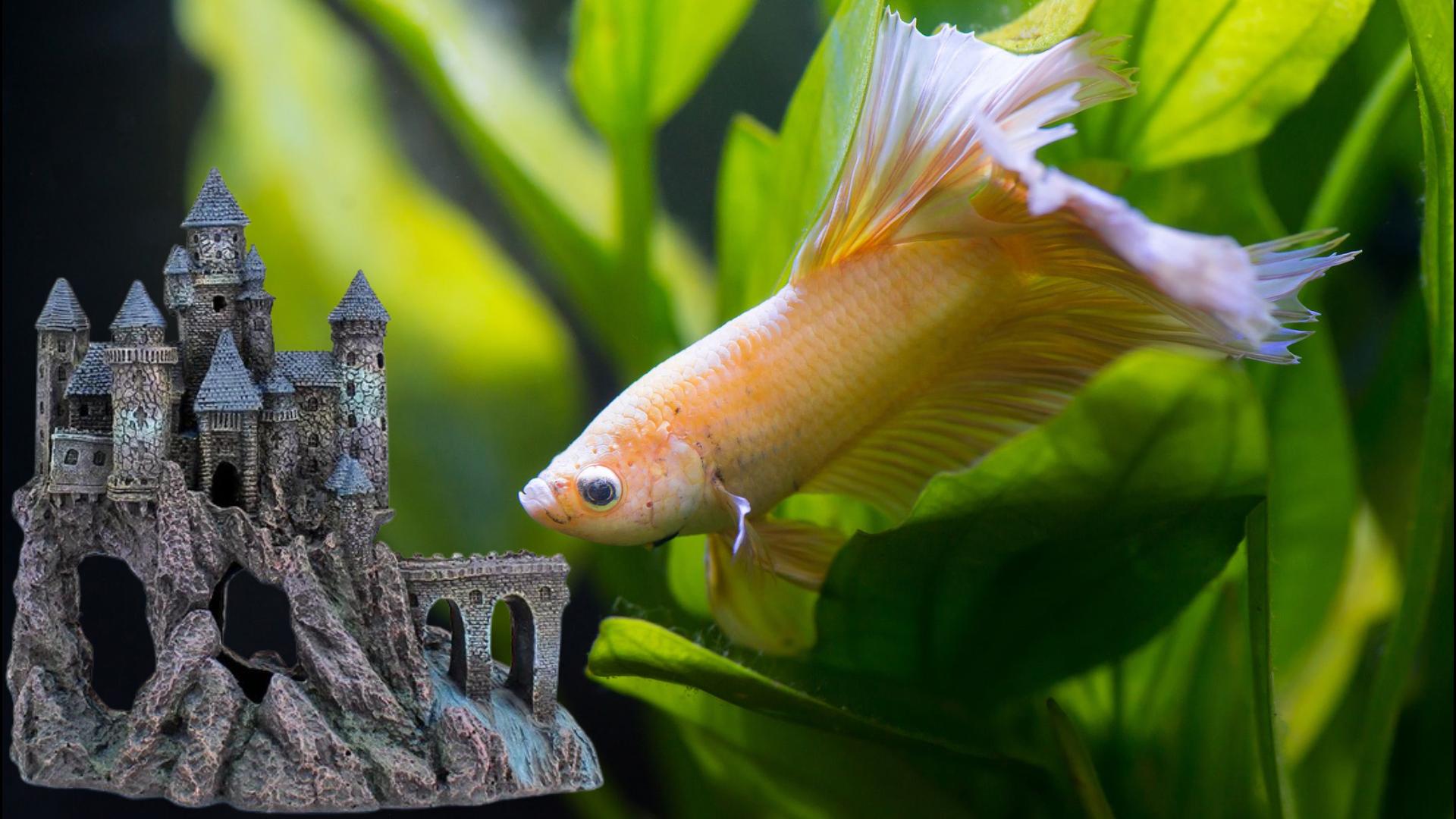This post will discuss the 5 best aquarium Gravel Cleaners that make aquarium maintenance easy. Please note, these reviews are based on my personal experiences and research into gravel cleaners. This is an unbiased review with no product promotions. Let’s get started.
What Is An Aquarium Vacuum?
Aquarium vacuums are very useful equipment if you like to clean fish tanks easy. As you may know already, cleaning their tanks is not the easiest job in the world. A gravel vacuum helps you keep your fish tank clean as it sucks up all the dirt, debris and waste your fish produce.
Water changes are essential to fish keeping, but they can be painful. The vacuum can be used to suck up the water and change the water quicker! Especially they are much easier when you change only 20-80% of the water and are not planning for full tank recycling.
Types of Aquarium Vacuum
There are two main types of gravel vacuum – siphon vacuums and electric vacuums. Both have their benefits and drawbacks. This video helps you to pick the best one that suits your tank.
Siphon gravel vacuum is the most popular vacuum type. Fairly cheap and available in a wide range of sizes, this vacuum is easy to use because gravity does all the work.
However, because it sucks up water and dirt, you’ll need to drain your tank every time you use it. This is the best vacuum if you want one to use during water changes.
An electric gravel vacuum is more expensive than a siphon gravel vacuum. They don’t drain your tank and instead pump the water through the vacuum, trapping dirt, debris, waste and food in the filter.
These can be much easier to use and are great for cleaning the bottom of the tank between water changes.
This comes with an adjustable flow controller. It allows to regulate the water flow according to the tank’s cleaning needs. It consists of a built-in filter bag, which prevents gravel or sand from entering the hose and potentially causing clogs.
1. Aqueon Siphon Vacuum Gravel Cleaner
This is a very popular Siphon Vacuum used by many fish keepers. It works well in smaller aquariums. This vacuum cleaner comes in a variety of sizes that fit different aquariums.
This one i bought comes with 6 feet flexible tube, small hose clip to secure with your bucket or tank. You have to attach the intake tube at the end of the hose which works as a vacuum for your tank.
You can start the gravel cleaning by giving it a couple of pulls on the end it comes with. Just start it by keeping the tube in the bucket and give it few pumps.
Water will immediately start running and you will see this happening as you control it. Bend the hose to pause, keep the vacuum end submerged, make sure the bucket is below the tank.

Pros:
- Makes routine water changes easier.
- Much suited to smaller aquarium tanks like betta tanks.
- Less cost when compared to other types.
Cons:
- I find this hose foul-smelling, hope they change the quality.
2. Laifoo Aquarium Siphon Vacuum Cleaner
The vacuum cleaner can be used for gravel and sand, making the task incredibly convenient and efficient. One of the standout features of this vacuum cleaner is its length. The 5ft or 7ft hose provides ample reach, allows to clean the entire tank without constantly repositioning the cleaner.
Using a siphon vacuum cleaner is straightforward. The priming bulb makes it easy to start the suction process. Once the water flow begins, the cleaner effectively suckers up debris, dirt, and waste from the gravel and sand.

Pros:
- Perfect for small tanks.
- Works well for sand and gravel cleaning
- Comes with various hose length options
- Siphon ball is easy to use compared to similar types
Cons:
- I prefer a longer handle for a better grip.
- Suction is weak, don’t work for bigger tanks.
3. Hygger Aquarium Gravel Cleaner
I have found this gravel cleaner to be one of my favorites for cleaning, as the suction speed is high, and especially works well for larger fish tanks. It also comes with a clip to adjust your suction rate. I personally find this vacuum cleaner’s design looks much better than other products.
It takes a couple of pulls on the trigger to get the suction started, and then you can move around the whole tank. It pulls the gravel up slightly, and it really pulls out the dirt from the water and bottom of the tank.
The tube length makes it easy to get to the bottom of bigger tanks. You don’t have to put your hand down and easily move around the fish and decorations. It truly makes tank cleaning easier!

Pros:
- Design and packaging look cool.
- Excellent suction ratio for faster cleaning.
- Works well for larger tanks.
- Comes with flow adjustment to control suction speed.
Cons:
- Tube is too soft, accidental bending blocks the flow.
- Gun function can sometimes be difficult for the hand and wrist.
4. Upettools Aquarium Gravel Cleaner
This model is a multi-use design that clears your tank dirt, change the water, and removes toxins. With a high flow rate, you can change the water of 180-gallon tank in half an hour. Also, it can performs three additional functions including sand washing, water shower, and water flow.

This cleaner comes with four different modes. The first is for cleaning gravel with a 360-degree duckbill head. The second is a 45-degree corner head for cleaning smaller particles and changing water without sucking up sand.
The third mode is a water changer, which can be used for draining and adding water. The fourth is a water shower to add oxygen to your aquarium. But I find it time-consuming to switch between the different cleaning heads. Before you turn it on, put the pump in the water. It needs to be in the water to work. Also this pump is heavy, so be careful around fish.
Pros:
- High flow rate, works well for bigger tanks.
- Multifunctional tool that cleans sand, absorbs dirt, and filters water.
- Adjustable flow rate and tub length.
- Works with electrical power, no manual pump is required.
Cons:
- It is better suited to sand than gravel from my experience.
- I felt assembly is a little complex for gravel cleaner.
5. AQQA Aquarium Gravel Cleaner Kit
This Siphon Kit offers six functions to clean your fish tank quicker and easier.
First, it has a 360-degree rapid water intake strainer that quickly drains your aquarium water for a complete water change. The motor is designed to start at the lowest water level of two inches, but it can even suck up water from as little as half an inch!
Next, the 360-degree head brushes and sucks at the same time to clean dirt from the walls, rocks, and other types of décor in your aquarium. The gravel washer has a filter sponge so you can remove impurities even in fine sand.
The 45-degree corner suction inlet is a great option for cleaning rocks and pebbles in your tank since it can get to the impurities hidden between the stones.
Pros:
- Multifunctional with six different processes.
- The motor works even in low-level water.
- The water shower and filter bag help increase water circulation.
Cons:
- Not suited to small fish tanks.
- Time-consuming to switch between attachments.
How To Clean Planted Betta Fish Tank?
Now let’s talk about cleaning and water changing planted betta fish tank with steps. In this guide, we’ll walk you through the process of tackling algae growth, cleaning stones and plants, performing water changes, and achieving a pristine, natural-looking aquarium.
Algae is a common issue in aquariums, and it’s critical to recognize the signs that your tank needs cleaning. In this case, algae have taken over the stones, and leaves of the plants, and even affected the tenellus leaves. The moss in the tank has deteriorated significantly, necessitating its removal.
Products to Clean A Betta Fish Tank
If you are looking for best 5 gallon tanks in the market for your fish aquarium, check this blog page.
All The Steps to Clean A Betta Fish Tank
Step 1: Initial Stone Cleaning
Begin the cleaning process by removing the smaller stones with moss buildup. These stones can be gently scrubbed to remove algae, debris, and moss, rejuvenating their appearance.
Step 2: Cleaning Smaller Plants
For smaller plants like bucephalandras, carefully remove them from the tank and place them in a tub of water. Gently clean the leaves to remove any algae or debris that might have accumulated.
Step 3: Brushing Larger Stones
While the larger stones remain in the tank, brush them thoroughly to remove algae. Leaving a touch of algae intentionally on some of these stones can provide a more natural look to your tank’s decor.
Step 4: Water Change
First Round: At this point, it’s time to change the water. Use a siphon or aquarium vacuum to remove approximately 80% of the water from the tank. It’s worth noting that betta fish usually don’t need to be removed during regular water changes unless you’re doing full tank cycling.
Step 5: Refilling and Cleaning
Fill the tank with fresh water, aiming to replace about 50% of the volume. As you refill, be cautious not to disturb the decorations or the fish. This will help remove waste and excess nutrients that contribute to algae growth.
Step 6: Water Change – Second Round
Perform a second round of water changes to further remove debris and maintain water quality. Vacuum about 20% of the water this time and refill with 50% fresh water.
Step 7: Cleaning and Replanting
While performing the second water change, clean the smaller plants that you removed earlier. Gently remove any debris or algae from their leaves before placing them back in the tank.
Step 8: Trimming Affected Leaves – Betta Fish Tank Clean
Now, trim the Tenellus leaves affected by algae. Pruning these leaves improves plant health but also enhances the tank’s aesthetic appeal.
Step 9: Glass Clean
Using a spatula, carefully clean the algae spots on the glass. Furthermore, employ a brush to eliminate any lingering algae or debris from the decorations and substrate
Step 10: Final Water Fill
With the cleaning and maintenance tasks finalized, it’s now time for the final water fill in the tank. Ensure the water parameters are appropriate for your betta fish.
Clean A Betta Fish Tank Tips
Moreover, intentionally retained algae on select stones contributes to the tank’s natural aesthetics. Regular maintenance routines like the one we’ve just walked through are essential to the long-term health and beauty of your planted aquarium.





